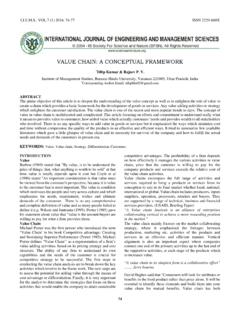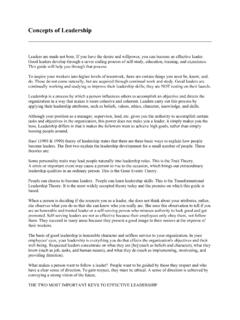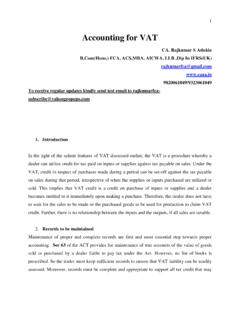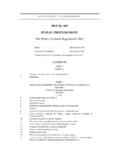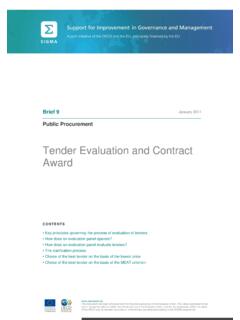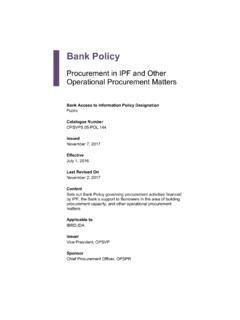Transcription of Strategic Marketing Planning: Theory and Practice1
1 The Marketing Review, 2006, 6, 375-418 ISSN1469-347X print / ISSN 1472-1384 online Westburn Publishers Ltd. Strategic Marketing Planning: Theory and Practice1 Malcolm McDonald 2, Cranfield University School of Management In order to explore the complexities of developing a Strategic Marketing plan, this article is written in three parts. The first describes the Strategic Marketing planning process itself and the key steps within it. It also deals with implementation issues and barriers to Marketing planning. The second part provides guidelines for the marketer which will ensure that the input to the Marketing plan is customer focused and considers the Strategic dimension of all of the relationships the organization has with its business environment.
2 The third part provides a brief overview of a process for assessing whether the Strategic Marketing plan creates or destroys shareholder value, having taken account of the risks associated with the plan, the time value of money and the cost of capital. It also outlines other metrics for measuring the effectiveness of the Marketing strategy. Keywords: Strategic Marketing , planning, world class, success factor, Marketing accountability Introduction Research into the efficacy of formalised Marketing planning (Thompson 1962; Leighton 1966; Kollatt et al. 1972; Ansoff 1977; McDonald 1984; Greenley 1984; Piercy 1997; Smith 2003) has shown that Marketing planning can make a significant contribution to commercial success.
3 The main effects within organizations are: the systematic identification of emerging opportunities and threats preparedness to meet change the specification of sustainable competitive advantage improved communication among executives reduction of conflicts between individuals and departments the involvement of all levels of management in the planning process more appropriate allocation of scarce resources consistency of approach across the organization a more market-focused orientation across the organization 1 This article is Malcolm McDonald, 2006, and is used under licence. It also appears as a chapter in the forthcoming book: Baker, M.
4 J. and Hart, S. (Eds) The Marketing Book, 6th edn, (Oxford: Butterworth-Heinemann), and is reproduced with their permission. 2 Correspondence: Professor Malcolm McDonald, Cranfield School of Management, Cranfield University, Cranfield, Bedford, MK43 0AL 376 The Marketing Review, 2006, 4, 375-418 However; although it can bring many benefits, a Strategic Marketing plan is mainly concerned with competitive advantage that is to say, establishing, building, defending and maintaining it. In order to be realistic, it must take into account the organization s existing competitive position, where it wants to be in the future, its capabilities and the competitive environment it faces.
5 This means that the Marketing planner must learn to use the various available processes and techniques which help to make sense of external trends, and to understand the organization s traditional ways of responding to these. However, this poses the problem regarding which are the most relevant and useful tools and techniques, for each has strengths and weaknesses and no individual concept or technique can satisfactorily describe and illuminate the whole picture. As with a jigsaw puzzle, a sense of unity only emerges as the various pieces are connected together. The links between strategy and performance have been the subject of detailed statistical analysis by the Strategic Planning Institute.
6 The PIMS (Profit Impact of Market Strategy) project identified from 2600 businesses, six major links (Buzzell 1987). From this analysis, principles have been derived for the selection of different strategies according to industry type, market conditions and the competitive position of the company. However, not all observers are prepared to take these conclusions at face value. Like strategy consultants Lubatkin and Pitts (1985), who believe that all businesses are unique, they are suspicious that something as critical as competitive advantage can be the outcome of a few specific formulae. For them, the PIMS perspective is too mechanistic and glosses over the complex managerial and organizational problems which beset most businesses.
7 What is agreed, however, is that Strategic Marketing planning presents a useful process by which an organization formulates its strategies, providing it is adapted to the organization and its environment. Positioning Marketing Planning with Marketing Indeed, Smith s PhD thesis (2003) proved a direct link between organisational success and Marketing strategies that conform to what previous scholars have agreed constitutes strategy quality, which was shown to be independent of variables such as size, sector, market conditions and so on. This thesis linked superior performance to strategies with the following qualities: 1. Homogenous market segment definition 2.
8 Segment specific propositions 3. Strategy uniqueness 4. Strength leverage and weakness minimisation 5. Creation of internal and external synergies 6. Provision of tactical guidance 7. Alignment to objectives 8. Alignment to market trends 9. Appropriate resourcing 10. Clear basis of competition Strategic Marketing Planning: Theory and Practice 377 Let us first, however, position Strategic Marketing planning firmly within the context of Marketing itself. As can be deduced from Chapter 1, Marketing is a process for: defining markets; quantifying the needs of the customer groups (segments) within these markets; determining the value propositions to meet these needs; communicating these value propositions to all those people in the organization responsible for delivering them and getting their buy-in to their role; playing an appropriate part in delivering these value propositions to the chosen market segments; monitoring the value actually delivered.
9 For this process to be effective, we have also seen that organizations need to be consumer/customer-driven. A map of this process is shown below. This process is clearly cyclical, in that monitoring the value delivered will update the organization s understanding of the value that is required by its customers. The cycle is predominantly an annual one, with a Marketing plan documenting the output from the understand value and determine value proposition processes, but equally changes throughout the year may involve fast iterations around the cycle to respond to particular opportunities or problems. It is well known that not all of the value proposition delivering processes will be under the control of the Marketing department, whose role varies considerably between organizations.
10 Figure 1. Map of the Marketing Process Deliver value Define markets& understand value AssetBaseDetermine value Proposition Monitor value 378 The Marketing Review, 2006, 4, 375-418 The Marketing department is likely to be responsible for the first two processes, Understand value and Determine value proposition , although even these need to involve numerous functions, albeit co-ordinated by specialist Marketing personnel. The Deliver value process is the role of the whole company, including, for example, product development, manufacturing, purchasing, sales promotion, direct mail, distribution, sales and customer service.


